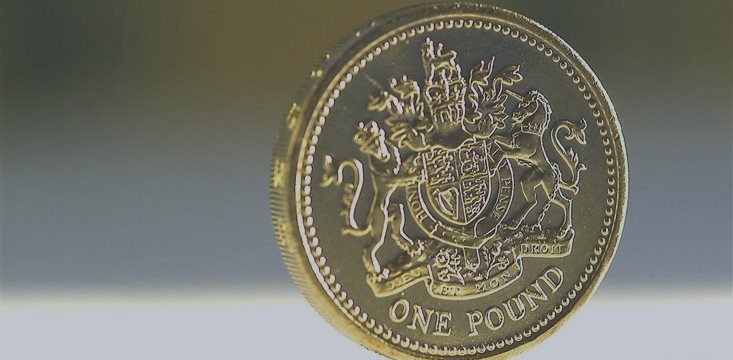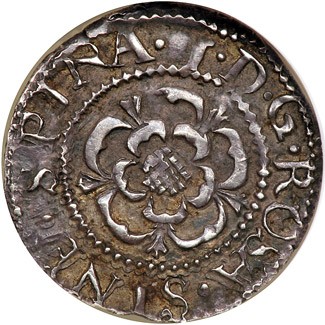
World's oldest currency in use: Pound sterling reveals its history. PART 1
The pound sterling is the world's most ancient currency still in circulation. It has accompanied the United Kingdom's inhabitants for about 1200 years, born about 775AD, when "sterlings" or silver pennies were the main currency in Anglo-Saxon kingdoms.
Thus, the pound traces its roots back to continental Europe.
Its name derives from the Latin word Libra for weight or balance, via the construction Libra Pondo, meaning a pound weight. While the word Libra has long since been discarded, it makes its presence felt in both the £ symbol, an ornate L, and the abbreviation for the unit of mass, lb.
The crossover with mass was not coincidental. If you had 240 of silver pennies, you had one pound in weight - a huge fortune in the 8th century. Inflation only brought one into many people's grasp in the 17th century.
In an echo of the ancient Roman system of libra, solidus and denarius, a pound was thus divided into 20 shillings and 240 silver pennies. An equivalent system of one livre to 20 sous and 240 deniers had already been adopted in the Frankish kingdom under Charlemagne.
Surprisingly, though, the name "sterling" took a while to appear. The first
mention - "sterilensis" in 1078 - is from the days of William the
Conqueror, and it originally referred to pennies not pounds, but its
origins are mysterious, deriving perhaps from "esterlin", a Norman word
for little star, or lesterling, an Arab word for money. The name only became commonplace in the 13th century. William the Conqueror, by the way, was the one who introduced the shilling into his
new kingdom.
The pennies were coined to keep Viking raiders away by paying protection money or danegeld. 150 years later, Athelstan, the first King of England, established a series of mints across his newborn nation, unifying the output in the Statute of Greatley in 928 and founding sterling as a national currency.

James I (1603-25) silver Thistle Penny
There were no pound coins until 1489, when they first appeared under Henry VII and were called sovereigns. The shilling was first minted in 1504.
Banknotes began to circulate in England soon after the foundation of the Bank of England in 1694 - when King William III established it to fund his fight with France.
Before that, they were hand-written, and the store for spare money was the Tower of London. Silver pennies were the only coins right through until the 13th century and silver was the currency standard till the 18th century, when gold became the basis of the pound.
Gold coins, however, first emerged in 1560, and by 1672 some were made of copper.
From 1717 the UK defined sterling's value in terms of gold rather than its original silver. The gold standard was not accepted until the 1870s when Germany adopted gold, thus announcing an era of grand scale international trade.
The standard works on the principle that a nation must back its banknotes with the equivalent in gold, established exchange rate stability. Sterling's strength was the basis of the gold standard, and was behind a sustained period of global growth right up until to 1914.
But the 19th century governments'
success rested on the disenfranchisement of the working classes. Modern
democracy would not allow governments to ignore exchange rate pressure and so
the gold standard was a unique period in economic history.
The standard broke down globally between 1930-1933, under pressure of slump and the huge cutbacks in lending, which led to an era of economic protectionism and limited international trade.

Sovereign - Young Victoria
The dollar's growing dominance began to reduce sterling's importance as a reserve currency, and the Bretton Woods conference in 1944 heralded the end of sterling's predominance in international trade, and the triumph of the American dollar.
The agreement set both the dollar and the pound as reserve currencies, ignoring the UK's very large balance of payment deficit caused by the Second World War. That reserve status meant that other nations must accept dollars or pounds to settle debts.
But the pound was not a popular reserve currency, although the
Commonwealth sterling block helped it retain some importance in currency
markets. After the war, there was speculation that sterling was to devalue,
and so many countries converted their pounds to dollars.
Britain's trading partners in the sterling block - mostly the colonies - wanted consumer goods, which the UK could not supply, and thus they turned to the USA and dollars for their consumer necessaries, further weakening the British economy. By 1949 sterling's importance as a reserve currency was severely damaged, and in 1949 it devalued 30 percent.
Although devaluation had helped Britain's exports, the same was not true in 1967....
The history of the pound sterling from 1949 till the present will soon be published in the second part of my post!
Sources: BBC


